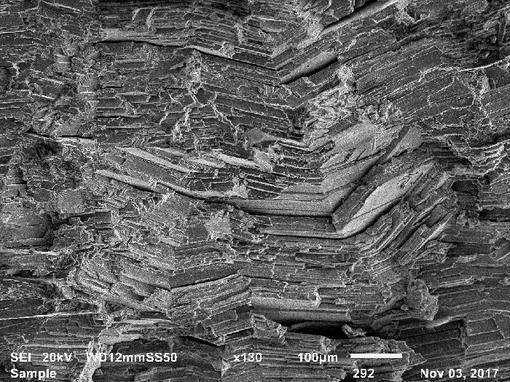Abigael Bamgboye: Finding my passion for materials science
Categories: Materials

Russian-UK Raw Materials Dialogue in St Petersburg (myself with another Imperial Materials Science student, Chimdi Igwe)
My first encounter with materials science was in a Design and Technology classroom when I was 13 years old. Tasked with designing a product that used ‘smart materials’ (materials that respond to stimuli such as pressure, heat and light), my imagination ran wild with ideas about how we could incorporate this into clothing. My friend and I came up with the concept of the ‘novel bra,’ which could grow with its wearer through puberty. We presented our design with a mini marketing campaign, explaining how the bra could alter its shape in response to changes in skin pH induced by hormones. The project ignited a spark in me to ask why materials behave the way they do.
I thought: ‘Why do glasses shatter? Why are metals strong? How can you design materials that can withstand extreme heat, e.g. in airplane turbines or rocket engines? How can you create nanoporous structures which give you ‘breathable fabrics’?’
A few years later, aged 16, I took part in Construkt - a programme designed to let young people experience the full scope of an engineering project. We took part in a range of activities, from a creating a tender pitch to bid for a project from the client, to designing and manipulating CAD models, interpreting engineering drawings and finally building a structure on a mock construction site. I gained a fantastic insight into the variety of stages involved in engineering projects; some very technical and some business-oriented. I also started to see how engineering manifests itself everywhere; in trains and skyscrapers, but also in the programming of electronic devices and the manufacturing of cosmetics and food.
Studying materials science appealed to me because materials are all around us. Materials science is a discipline that uses maths, chemistry, physics, biology and engineering to advance existing technologies and develop new ones. It’s very relevant to the modern era since much of our everyday technology, from cars and electronic devices to surgical implants and food packaging, can be made more sustainable and efficient through the application of materials science. Future technologies such as nanomaterials, conductive polymers and ceramics and functional glasses will also stem from this interdisciplinary field. So far, some of my favourite experiences while studying materials science have been:
- Learning and using maths and computing (such as MATLAB) to model a physical process.
- Breaking apart a computer hard drive and using characterisation techniques such as Scanning Electron Microscopy and X-Ray Diffraction to identify its materials.
- Synthesising silver nanowires to make a conductive thin-film (research related to creating flexible screens).
- Viewing materials at high magnifications and understanding how metals and glasses break the way they do.

A Scanning Electron Microscope image of a fractured specimen of zinc, which breaks along parallel planes.
At university, I've been able to develop my love of materials as the Vice President of the Materials Science and Engineering Society (MatSoc) at Imperial College London. I've worked with companies and industry professionals to organise guest lectures and trips, allowing members of our society to visit research institutions and manufacturing sites such as the Diamond Synchrotron in Oxford, and Airbus’ UK wing-manufacturing facility. This summer, I’m coordinating a MatSoc tour to Stuttgart, Germany, where we will visit sites such as the German Space Centre to learn about their work on energy storage technology.
Last year, I became a student member of Institute of Materials, Minerals and Mining (IOM3). Through the IOM3, I won a scholarship to attend the Russia-UK Raw Materials Dialogue, a conference which aims to share UK and Russian experience and knowledge in the mining, oil and gas and raw materials sectors. It was a fascinating opportunity to gain technical insight into mining and fossil fuel industries, and it helped me to start thinking about other challenges facing the industry, such as geopolitical influences. Attending the conference also encouraged me to become more involved with the IOM3, and I am now a member of its Women in Materials Committee. I’m looking forward to contributing to the committee’s outreach events and campaigns in the future.
Over the next few months, I'll start to select modules to specialise my degree. I'm fascinated by nanomaterials and using theory and simulation to model materials, so I'm hoping to use these in my future career. When I look back on my journey into engineering, I could not have envisaged the variety of experiences I have undertaken, from standing on the top of a 27-storey building under construction, to looking at the beautiful and complex microstructure of metals. I’ve also greatly enjoyed introducing others to engineering, from answering the age-old question of, “what is materials science?”, to organising guest lectures, trips and workshops.
Engineering has given me the opportunity to explore and learn about the world around me, and I continue look forward to using materials science to sustainably develop the next generation of technology.

More on the author, Abigael Bamgboye
President Imperial Materials Society, Imperial College London



